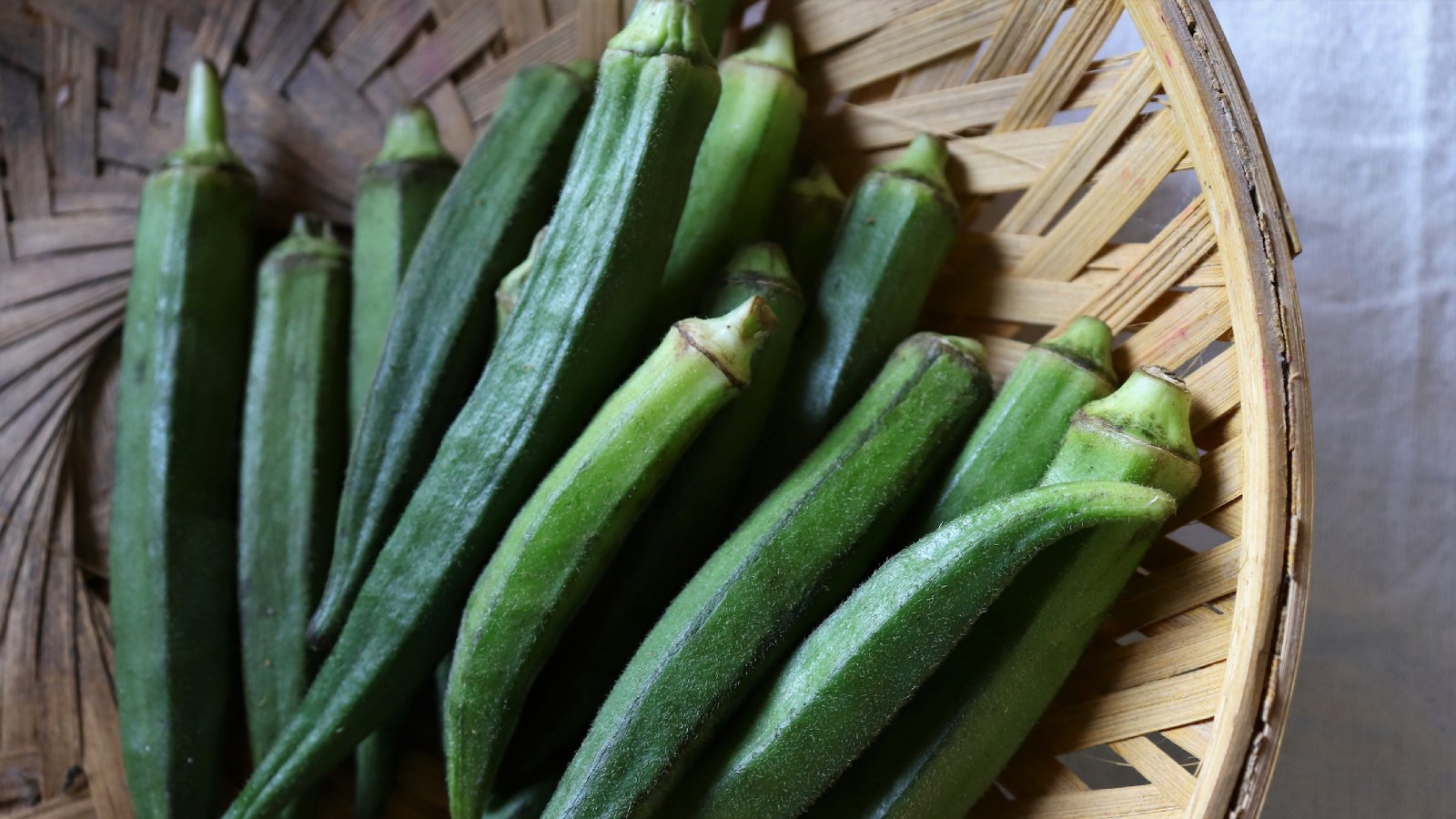How To Store Okra After Picking
Learn how to store fresh okra for up to a year by canning or freezing the harvest. For short-term storage it can go in the refrigerator for two or three days.


If you love okra, as many people do, you will want to preserve the harvest as long as possible. Fortunately, there are several ways to extend that enjoyment long after planting okra. Okra storage is simple: You can keep okra in the refrigerator for a few days; but for longer storage, consider freezing and/or canning.
How To Keep Okra Fresh And Store It For Later
After you harvest okra you can keep it fresh by storing it in the crisper drawer of your refrigerator for two to three days. Be sure the pods are dry, then you can loosely pack the unwashed okra in paper towels, then in perforated plastic bags. It is important they stay dry; any moisture that forms can cause the pods to turn slimy.
Watch your okra pods closely, because if the tips begin to darken, that is a sign the food quality is deteriorating, and the okra should be eaten as soon as possible.
Freezing Okra
To freeze okra, start with young, peak-quality okra pods that are free of discoloration or mold. If you are using quart containers, plan on about 1.5 pounds (0.7 kg) of okra to fill each.
- Wash the okra pods and remove the stems up to the caps, without cutting into the cap. Divide the okra into small and large pods, small pods being less than 4 inches (10 cm).
- Using a blanching basket or strainer, lower the pods into boiling water and cover. Blanch small pods for 3 minutes and large pods for 5 minutes. Start timing when the water returns to a boil after dropping in the okra. To cool the okra, move it into a large bowl of ice water for the same amount of time it took to blanch. (Note: Do not use copper, iron, or brass cookware; a chemical reaction can cause the pods to discolor.)
- Drain the okra well. You can leave the okra whole or cut it crosswise or lengthwise. (I’ve read that if you cut the okra lengthwise, it will be crispier when fried than if you cut it crosswise.)
- Pack the okra into prepared containers. Since there isn’t any liquid you can wrap the okra in plastic freezer bags, heavy aluminum foil or freezer wrap. Remove as much air as possible before sealing. A vacuum packaging kit is best for removing air. If you prefer, rigid plastic containers or glass jars made for freezing can be used. Leave a .5 inch (1.3 cm) headspace. Seal and label with date and okra variety name.
- Alternatively, you can freeze the okra first before putting it in bags or containers. Simply lay the well-drained okra on pans in the freezer till firm, then pack, seal, and label.
- Freeze at 0 degrees F. (-18 degrees C) Okra should maintain its quality for about 12 months.
Canning Okra
Another way to preserve okra is canning. Begin with young, tender okra pods that you have washed.
Warning: Canning, if done incorrectly, can lead to botulism and other serious conditions. Only proceed with these instructions if you are already experienced with canning.
- Trim the ends, and cut the okra into 1 inch (2.5 cm) pieces or leave them whole.
- Add okra to a saucepan. Cover the okra completely with hot water. Allow the okra to boil 2 minutes before draining.
- Fill heated jars with the hot okra. If desired, you can add salt to the jars. Use 1/2 teaspoon (2.5 ml) for pint jars and 1 teaspoon (1.9 ml) for quart jars.
- Add fresh boiling water to the jars, leaving a 1-inch (2.5 cm) space at the top of the jars.
- Make sure there are no air bubbles in the jars. Clean lid area if needed with a damp cloth, close lids, and process using your pressure canner instructions. If any of the jars do not seal they must be redone in new jars or refrigerated.
- Let the jars sit for 12 to 24 hours, then remove the rings. Wash off the jars, and label with the name of the food and the date before storing.
Gardening tips, videos, info and more delivered right to your inbox!
Sign up for the Gardening Know How newsletter today and receive a free copy of our e-book "How to Grow Delicious Tomatoes".

After graduating from Oklahoma State University with a degree in English, Susan pursued a career in communications. In addition, she wrote garden articles for magazines and authored a newspaper gardening column for many years. She contributed South-Central regional gardening columns for four years to Lowes.com. While living in Oklahoma, she served as a master gardener for 17 years.